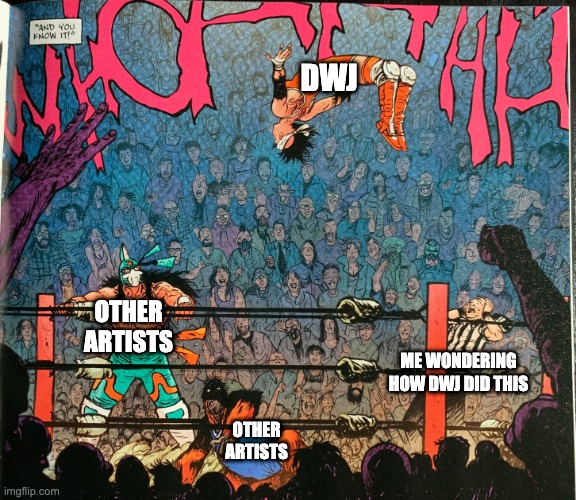The SKTCHD AWRDS: The Comics of 2022
It was a long year, this 2022, but it was a great one in comics, one filled with remarkable work by creators and fantastic comics as a result. Last week, I shared my Creators of 2022, and this week brought the same on the comics side, as 25 titles earned my vaunted, prestigious SKTCHD AWRDS. Each of these was given to one of my Comics of 2022 for a hyper specific reason, with that leading to the name of each totally real, absolutely not made up award. I created rules for how I determined the winners, though, because I am nothing if not driven by rules. Those rules were:
- These aren’t the “best” comics of the year. I don’t feel as if I can speak to that. I can speak to my favorites, and precisely why they stood out. That’s what this is.
- This only considers work released in 2022, but if I read it in single issues (or some other format) in 2021 and beyond, it didn’t factor in to my process. Apologies to all trade paperbacks released in 2022, basically!
That’s it! Beyond those rules, anything goes, as long as the comics are great! So let’s get to celebrating those award winners, with these titles ordered alphabetically (as long as you ignore the articles at the beginning of some titles).
If you enjoyed reading this look back on the best and brightest of comics in 2022, though, please consider subscribing to SKTCHD for features, interviews, columns, and more throughout the rest of the year and beyond.
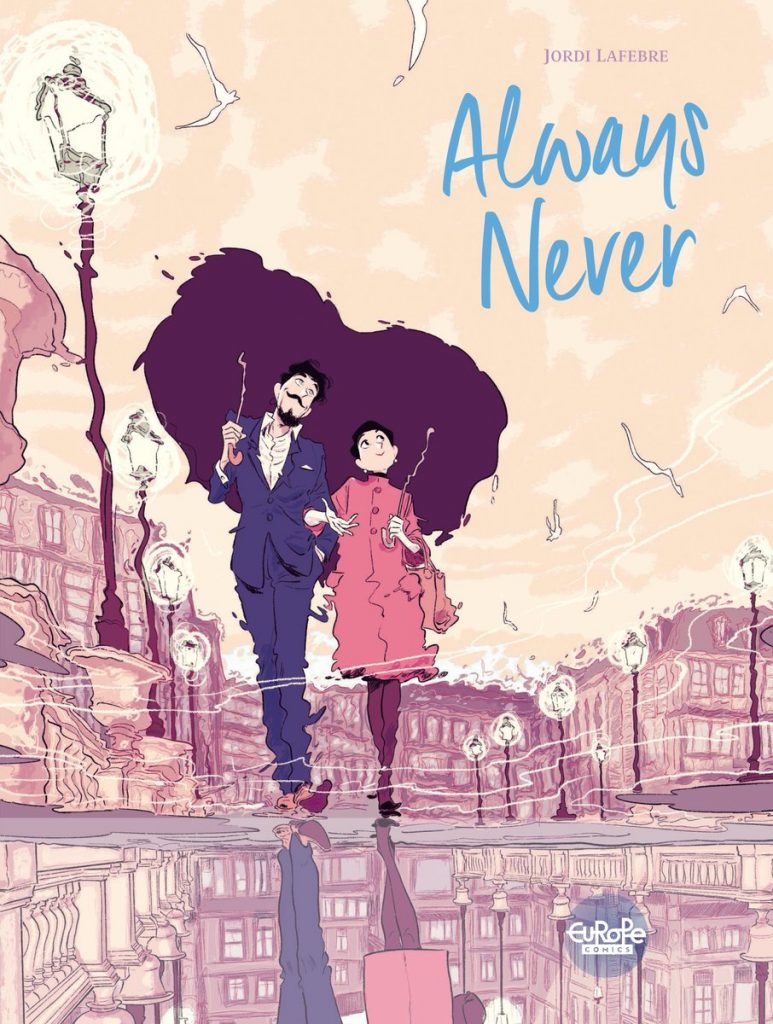
The True Love Award: Always Never
Why it stands out: If there’s one comic that matches the emotions of my heart, it’s this one. That’s because there’s something you might not know about me: I’m a hopeless romantic, someone raised on a sea of romantic comedies and stories with grand, sweeping gestures. So when I found out that Jordi Lafebre had made a romance comic with art that looked like that, something that my wife described to me as “looking like David art,” well, you knew I was going to be into it.
What I didn’t expect was this story’s structure, and how exactly Lafebre told the story. A straightforward version of this tale of two star-crossed lovers, Ana and Zeno, would have still worked, one where you meet them when they meet each other, proceeding to the latter stages of their lives from there. It would have worked, but perhaps not as well as the reality of Always Never. Lafebre elected to tell the story in reverse, beginning with the evening they finally connected on and closing with the day they first met. Reading it in such a way made it a far richer experience, as the whole time, you’re making connections and building parallels about their experiences, all the while realizing that this pair needed to go through all that to truly find each other in the end.
It’s a lovely read, one filled truly remarkable cartooning throughout by Lafebre. I’d be hard-pressed to point out a more lovingly crafted comic from the year from a visual standpoint, as the cartoonist turn Zeno and Ana into fully-realized, fully alive wonders you’re simply dazzled by. It’s a book about true love, done by someone filled with true love for the medium he’s working in, resulting in a work you can’t help but adore.
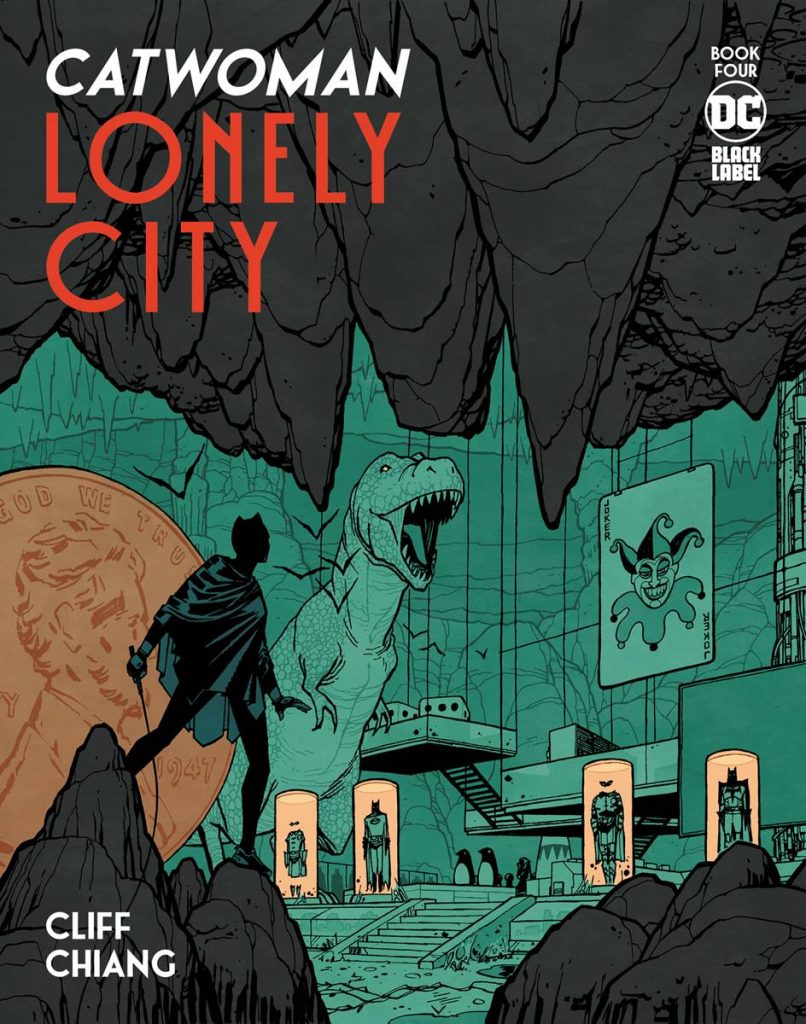
The Pace and Space Award: Catwoman: Lonely City
Why it stands out: I’ve written a lot about Cliff Chiang’s Catwoman: Lonely City before, and all that still stands. But that was written after the first two issues had arrived and two still remained, which meant that there was still a long way to go in Selina Kyle’s journey of discovery and heartache in a future, Batman-less version of Gotham. And while the first two established a high level of potential for this series, the latter half cemented it into reality, as Chiang delivered a pair of issues in 2022 that solidified this as not an entrant on this list, but arguably the finest work of the cartoonist’s career and a pantheon-level Gotham story.
The thing about it that differentiates it from its peers on the Gotham side of the beat isn’t just that it’s well-drawn or well-written or anything simple like that. In my mind, it comes down to Chiang’s values as a storyteller, and his vision for what a story set in this world with these characters could be. Sure, it has wonderful action set pieces and remarkable relationships between characters like Selina Kyle and Killer Croc or Harvey Dent and Barbara Gordon. But Chiang takes time to let us feel the emotions of the story and to let us drink in the details of this world, slowing things down with the extra space the Black Label format provides and adding in panels or beats that enrich the story and elevate what we’re feeling.
Part of the natural tension of the comic medium and its long-dominant form, the 20-ish page single issue comic, is it requires storytelling sacrifices that favor plot over emotion. It’s always on to the next thing, as you must maximize the happenings to reinforce the value of the format. But with the extra length and longer page count of Black Label’s Prestige Plus, Chiang can luxuriate in a moment, ensuring that we feel everything. Sometimes that’s with a quick look Selina makes at a poster on a wall, establishing something about the current state of Gotham. It can even be taking a break from the momentum of a heist to flashback in the story and help readers understand what this means for a character. It could even be using a single, mammoth page for just three words, because the cartoonist knows we need to drink in the moment, because we’ve been building to it throughout.
But my favorite variety can be found in the final issue on its penultimate page, as two characters take a break from talking to contemplate what was just said. This wide panel providing a bit of a three quarter, overhead view of this pair wouldn’t exist in a regular length comic, because it doesn’t do much at all. But it says everything in its silence, as it’s the beat where the journey happens in Selina’s head. Chiang excels throughout in all his roles, but the thing that impressed me the most Catwoman: Lonely City was how he paced the story and used the space of the format to enrich the experience and immerse readers in it. That’s masterful work from one of the best in the business right there.
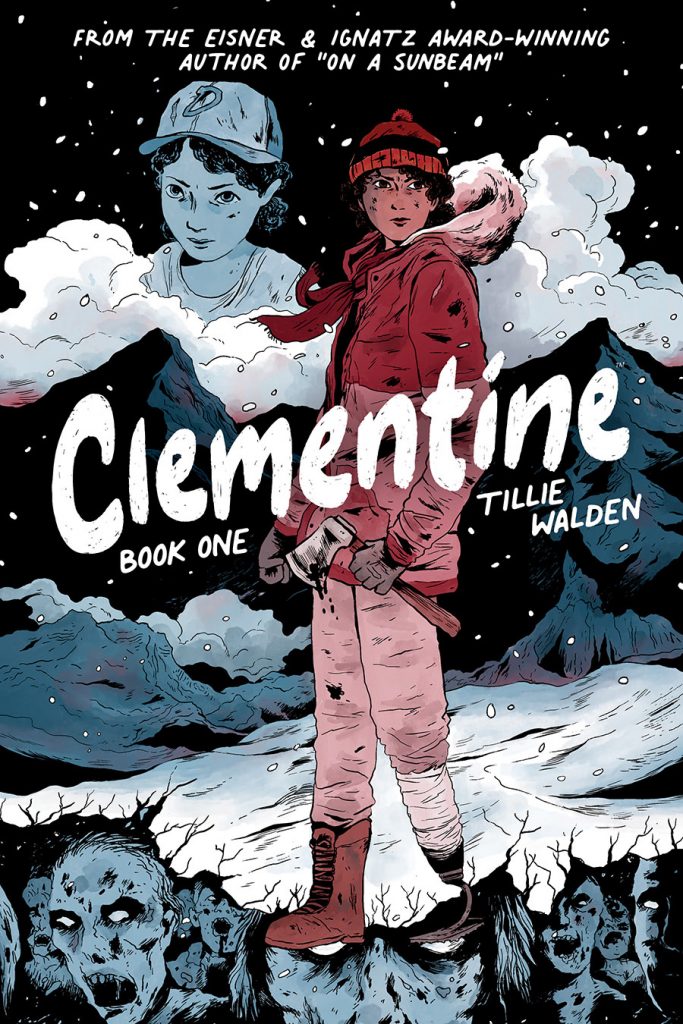
The Perfect Marriage Award: Clementine: Book One
Why it stands out: The tricky thing about continuing a story in another medium is you’ll always be racing the ghosts of the past. You aren’t just telling another chapter at that point; you’re creating a comparison point to what preceded it. That’s especially the case with something like the Clementine series of graphic novels over at Skybound Comet. Following the enormously successful Telltale The Walking Dead video games series — which told the tale of Clementine, a young woman who grew up during the zombie apocalypse — would have been a tall task for anyone, if only because the hordes of insatiable, mindless masses were no longer zombies but video game fans, the most intense of critics of them all. You’d need to cast this book perfectly to get it right.
And they did, as Tillie Walden — the wondrous cartoonist behind Spinning, On a Sunbeam, and more — took on the challenge and absolutely nailed it. Clementine was a perfect Walden lead before this book even existed, so it felt like a layup once I learned she’d be writing and drawing this entire trilogy of books. But there’s always a gap between concept and execution, and thankfully, Walden’s efforts surpassed even my high hopes. Walden understood the character and this world perfectly, and told a haunting, engrossing tale that continued Clem’s story, but more importantly, mined new territory by shifting the focus from survival to learning to thrive. It went from being a journey of living to growing up, and finding yourself along the way. It’s a subtle difference, but an essential one, resulting in a read filled with exemplary characters, raw emotion, and one of the most exemplary endings of the year.
Tillie Walden took on the significant challenge presented to her and showed that it could be passed with flying colors, which was an extremely Clementine thing to do in her own right. This graphic novel was the result of a perfect marriage between character and creator, and it lived up to the expectations that and its significant past created — and then some.
If you’d like to read even more thoughts on this book, consider reading my full review from earlier this year, and if you’d like to listen to me discuss this book with Walden, catch her on a previous episode of Off Panel.
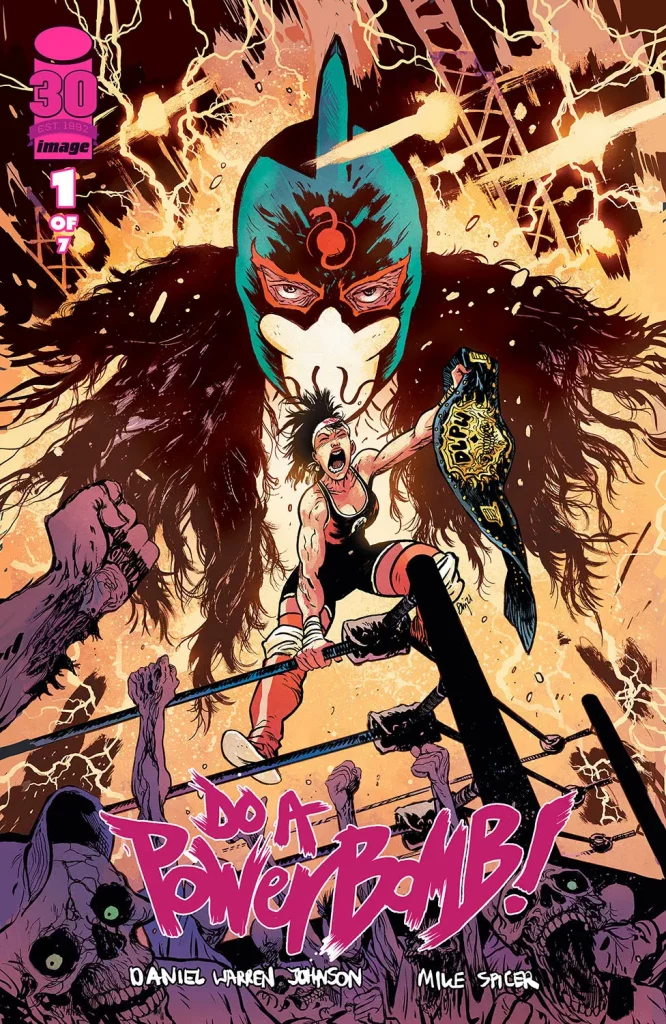
The Moonsault Award: Do a Powerbomb
Why it stands out: Every time I felt like I had this series pinned down, cartoonist Daniel Warren Johnson would completely flip the script on me, dropping an elite moonsault on me and my fellow readers in the process. In fact, I created a meme I shared on Twitter that I feel accurately explains the experience of reading this series, even if it’s more aimed at Johnson’s art in this one specific panel.
Whether it was big turns in the plot (which happened in issue #1, issue #2, issue #3, issue #5, and issue #6, to say nothing of the shocking turns in issues #4 and #7) or just mind-blowing choices he would make in his art, Johnson made surprising me as a reader his full-time job. And I love that. To be honest, one of my big beefs with a lot of comics these days is they often feel like something I’ve read before told in a way I’ve seen before. That’s fine! But adding a little spice to the equation never hurt anyone, and DWJ is all spice, all the time, constantly pushing the medium and himself in new directions. That leads to an incredible experience as a reader, and it resulted in a remarkable read in Do a Powerbomb.
But I do have to cite one other strength of his that underlines why his books work so well, particularly Do a Powerbomb. If this was just Johnson drawing a cool, crazy wrestling comic, it would have worked. But it was ultimately a story about family and sacrifice and the things we do to protect each other, and that made it not just a fun, energetic read, but an emotional, often heartbreaking one. You read a DWJ story just because it will be fun and gorgeous. You love a DWJ story because he knows how to do all that while investing readers in the journey and building full emotional investment in the characters. One is hard enough to do. Doing both is even more difficult. That’s what Johnson does every time, and Do a Powerbomb might be the best version of that idea to date.
Want to hear a bit more about what went into Do a Powerbomb? Listen to DWJ’s 2022 appearance on Off Panel
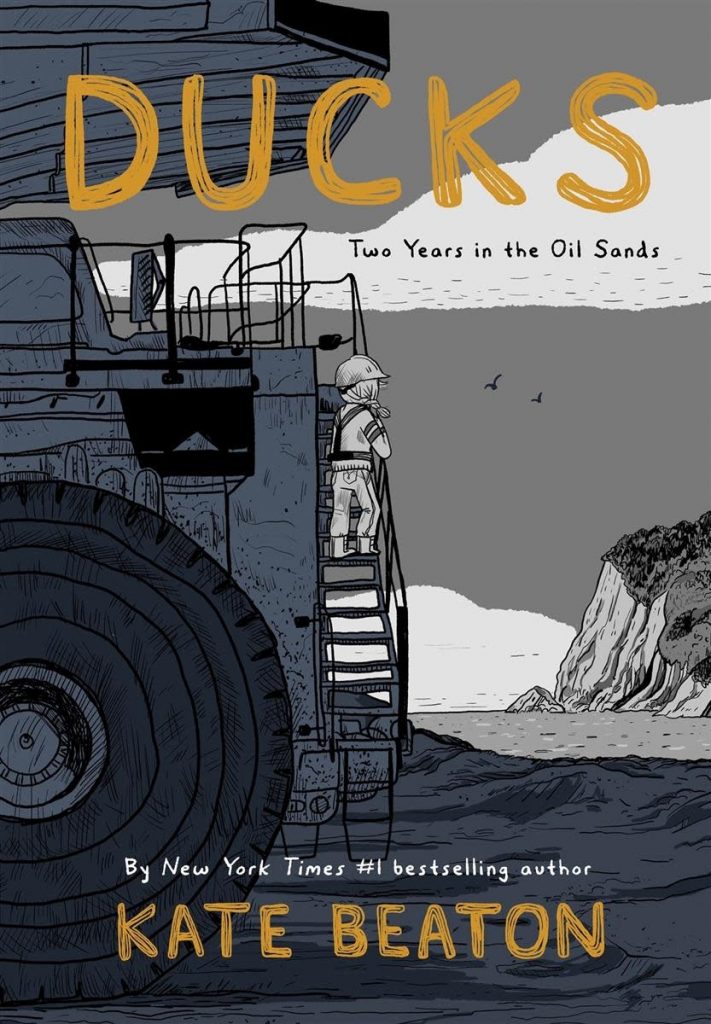
The Comic of the Year Award: Ducks: Two Years in the Oil Sands
Why it stands out: Kate Beaton has long been one of my favorite cartoonists. Hark! A Vagrant ensured that she simply had to be, as that long-running webcomic turned graphic novel series is one of the funniest comics ever made. I still will grab a copy of it or its second book Step Aside, Pops off my bookcase on occasion when I’m feeling down because Beaton’s wit and character work are a perfect balm for a bad mood. So when I heard that Beaton was working on an autobiographical graphic novel — Ducks: Two Years in the Oil Sands, a look at Beaton’s time working in Alberta’s oil industry and that larger entity’s position in the societal and commercial landscape of Canada — I knew I was in.
What I didn’t know is just how incredible it would be, even if I could have assumed that going in. The interesting too is that even though Ducks is much less a comedy and more set to the tone of life, with the good, the bad, and everything in-between actively present throughout, the roots of Hark! A Vagrant are here. That comes in the form of Beaton’s unique observational gifts, and how she’s able to turn her lens from literary characters and the musical superstars of yesteryear to her own life and the characters within. That results in an absolutely harrowing read, as Beaton shares everything from the experience, which results in a graphic novel that’s engaging, enraging, and engrossing all the same.
The word “masterpiece” is thrown around a little too easily these days. Not every comic, book, movie, or TV show can be on, otherwise it begins to devalue the word. But Ducks deserves it, as it finds one of the finest cartoonists in the medium today — if not ever — delivering her magnum opus, a comic that explores and examines humanity, the mechanisms of our society, varying cultures, and everything in-between with equal aplomb. More than that, it balances it all in a read that you can’t help but take in once you start, delivering every emotion available to the reader even if it constantly comes with a healthy side of foreboding. These are difficult things to do for anyone. Beaton does it in a way that perfectly leverages all the skills and abilities she has to her name, and builds upon those to find something more in her already deep well of storytelling craft.
Ducks: Two Years in the Oil Sands is my comic of the year. There was no choice about it, because it was the only choice. If you haven’t read it yet, needless to say, I highly recommend it, because it’s a singular work by a singular talent.
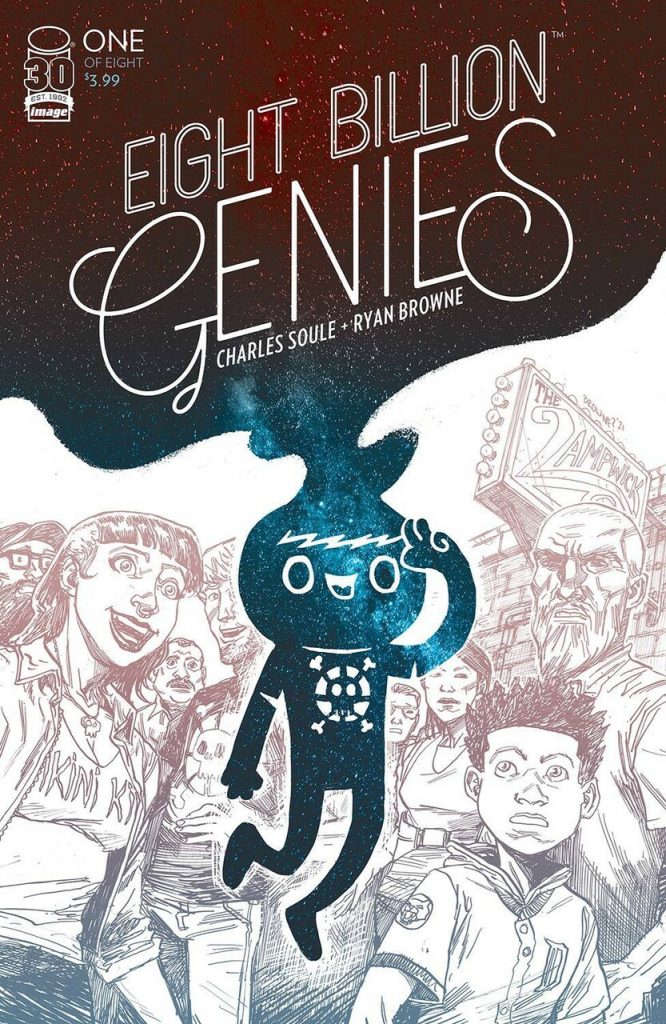
The “Anything is Possible!” Award: Eight Billion Genies
Why it stands out: When the Boston Celtics won the 2008 NBA championship, Celtics star Kevin Garnett famously said in a post game interview, “anything is possible…ANYTHING IS POSSIBLEEEEEEEE!!!!” as he screamed into the sky out of joy after finally winning a title. It’s a famous line in the annals of NBA history, and a unifying factor between sports and all facets of society to some degree: the joy of life comes from anything truly being possible.
That may be true, but it’s entirely possible that Ryan Browne and Charles Soule may have taken that idea too far with Eight Billion Genies.
The short pitch on this book is a beauty. “What if…every person on the planet was given their own genie with one wish attached to it?” You might immediately envision a utopian society. Maybe you picture fire and ash and a scorched landscape. The reality is roughly eight billion times more insane, and to be honest, fascinating and emotional and heartfelt and inventive and mad and genius. Browne and Soule’s Image series is an eight-issue one, taking us on a journey over an extended timeframe as the world goes from a whole lot of people and a whole lot of genies to considerably fewer, as people make wild, wild wishes and the Earth and its inhabitants suffer the consequences. If that was all it was, it would have been a fun, crazy ride. That wasn’t it.
Instead, it’s about family, both born and found. It’s about survival, and what that takes. It’s about con artists, and how chaos breeds opportunity. It’s about a dive bar, and the secrets it holds. More than that, it’s about Soule and particularly Browne going absolutely buck wild with the concept, delivering bonkers ideas at an endless rate and with equally endless enthusiasm. If you liked Curse Words, you’ll love Eight Billion Genies. It’s the evolution of their collaboration, proving that KG was right and truly anything is possible once again. But if you learn one other thing while reading this book, it’s “you better be careful what you wish for,” because god knows no one in this comic is.
I talked with Soule and Browne on Off Panel about this series before it arrived. If you’re interested in Eight Billion Genies, you should give it a listen.
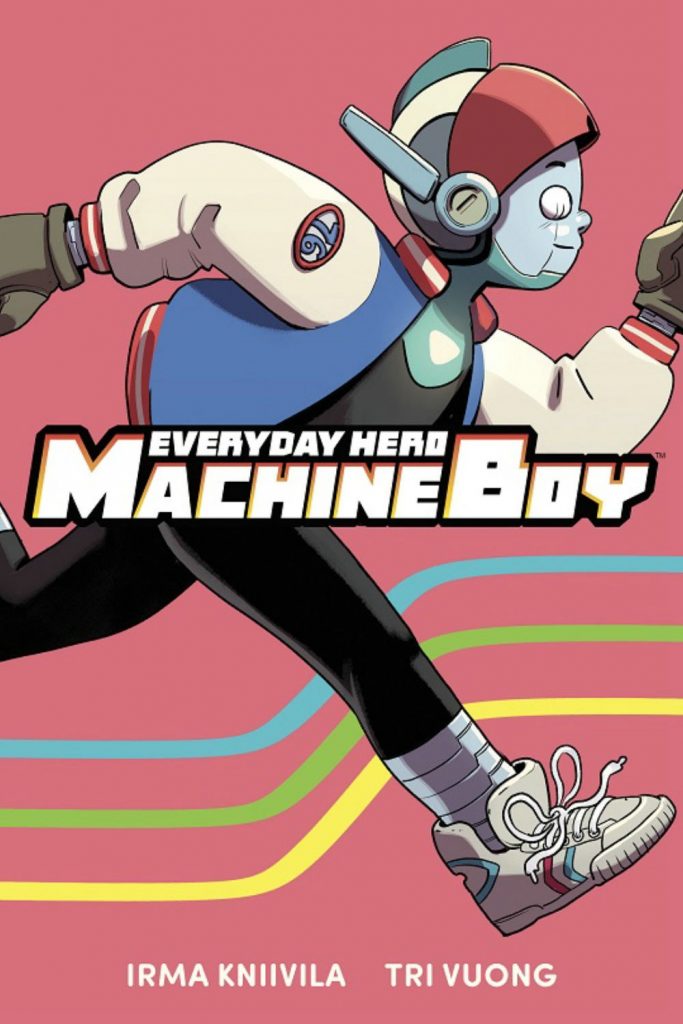
The Big, Big, Big! Award: Everyday Hero Machine Boy
Why it stands out: Everything about Everyday Hero Machine Boy is big. The situation that finds Machine Boy arriving on this Earth. His love for the world and the people around him. The pop superstars and their concerts. The relationships he makes and the adversaries he has to face. The emotions everyone within the book feels, and you feel because of that. Everyday Hero Machine Boy is a celebration of how something, or someone, small can change the world, and it becomes that thanks to the execution of Tri Vuong and Irma Kniivila, two creators who were new to me going in, but are permanently on my watch list thanks to the wondrous work they deliver here.
Despite advance hype from the Skybound Comet team about this book, Everyday Hero Machine Boy was a sleeper for me, a late-run read before The SKTCHD AWRDS started. I was interested, but it just kept dropping down the pile. In short: I underestimated it, expecting it to be something smaller than the joyous giant it proved to be. That might be the thing I loved the most about it, though. Everyday Hero Machine Boy had a joy and enthusiasm to it that was rare. Bad things happen in it to good people, but it in some ways is like a modern spin on Spider-Man’s early days, with a new hero in the titular character and an infusion of manga-adjacent energy throughout. This book was a delight to read, and one of the best times you can have in comics in 2022.
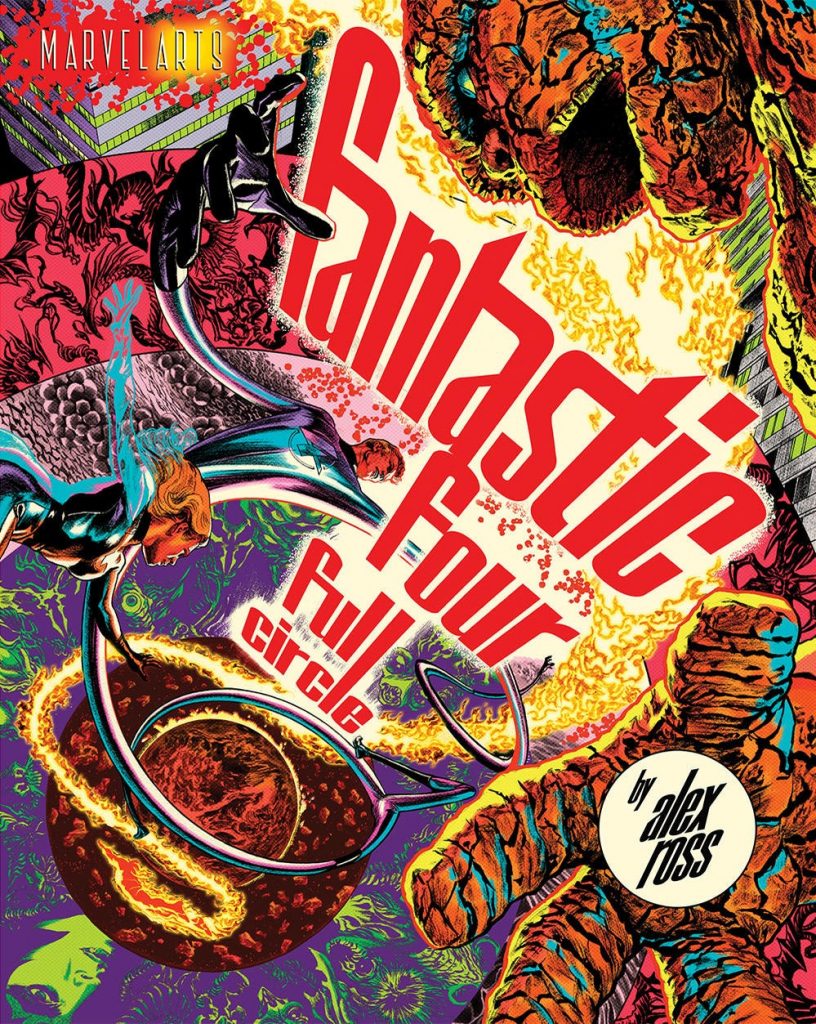
The King Award: Fantastic Four: Full Circle
Why it stands out: Directly following the footsteps of Jack Kirby, both creatively and narratively, has to be one of the biggest challenges in comics. You’re standing in the shadow of giants, and finding a way to the light is a lot to ask of any creator or creators. If you’re looking for something with an immense degree of difficulty, it’s trying to connect with the King and finding yourself anything but wanting.
And yet, here’s Alex Ross, finding himself anything but that.
Fantastic Four: Full Circle is a continuation of two stories from Fantastic Four history – Fantastic Four #51 and Fantastic Four Annual #6, two notable, standout releases from the immense past of those characters – as well as the remainder of it, as Ross’ efforts are in conversation with both those stories and those that followed. More than that, it’s an attempt by Ross to connect his art with Kirby’s while still making himself present throughout, an experiment by the legendary artist to honor and build on The King’s work and stories. It shouldn’t work, but it absolutely does, resulting in a tour de force running through FF history and Kirby’s visuals all focused through Ross as a prism.
This graphic novel is a slight story in its own ways, and quick jaunt between the cracks of Marvel history. But it’s less about continuity and more about the art form, as Ross delights in a constantly shifting visual style, touching on everything from pure, Kirby-esque superheroics, throwbacks to The King’s photo collages, 1970s black light posters, and the pure artistry of sandwich crafting. What it lacks in page count it makes up for in depth of experience, as Ross delivers a wondrous ride through his own guided tour of what moves the needle for him as an artist and a passionate supporter of the Fantastic Four. It’s an impressive read, and an ode to The King that lives up to the man himself.
Want to hear more about this book? Listen to my chat with Alex Ross on Off Panel.
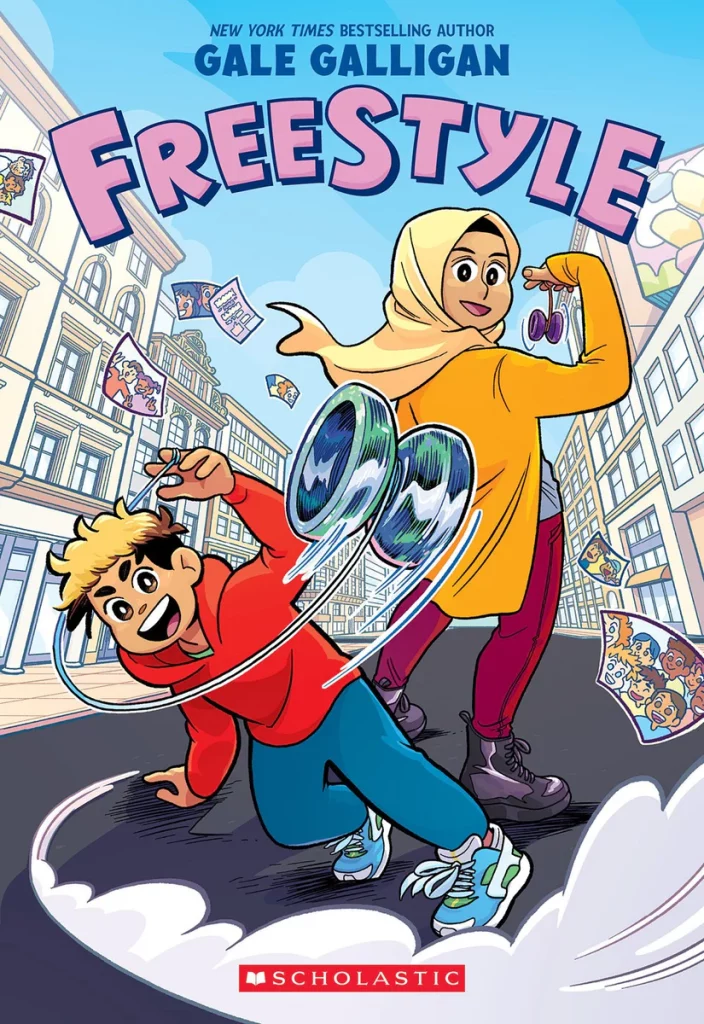
The Energy Award: Freestyle
Why it stands out: Gale Galligan’s Freestyle is an all-ages graphic novel that at its core is about friendship and how being different isn’t a weakness but a strength that can lift you up together. But it’s also about competitive break dancing and competitive yo-yo throwing, two spaces rarely touched on in comics. There are a lot of interesting overlaps between those two mediums, but maybe the biggest is how both have to maintain significant energy without losing form, because it’s about making the whole work even if they are about tons of smaller movements that pair together. That’s true of break dancing and yo-yo throwing, but it’s also true of comic books.
And that’s where one of my favorite things about Galligan’s work on this book lies. Making a story like this pop visually could be a challenge, if only because those are two hobbies that are defined by movement, something implied by comics but not executable in full. More than that, conveying motion normally takes time, meaning page and panel space, and delivering that while continuing the story is a tricky balance. Galligan nails that balance, as they combine those activities into some very lovely splash pages where the movement of the yo-yo’s string or the dance montages are used to express character beats or relationships in a clever way. Motion is conveyed, and within that, important insight about our cast and their emotions are delivered. That’s some next level cartooning!
Galligan delivers on the energy throughout while maintaining and even building on the comic form. This is a wondrous effort by a remarkable cartoonist, and one that finds them excelling at each facet of the work. That’s why Freestyle’s a story you cannot help but get invested in, even if you aren’t a lifelong aficionado of the break dancing and yo yo arts like I am. It’s about those, but in reality, it’s about people, both as individuals and as a community, and how we all fit. Galligan nails that vibe, and delivers a lovely book in the process.
Dig into the story behind this story with my recent chat with Galligan on Off Panel.
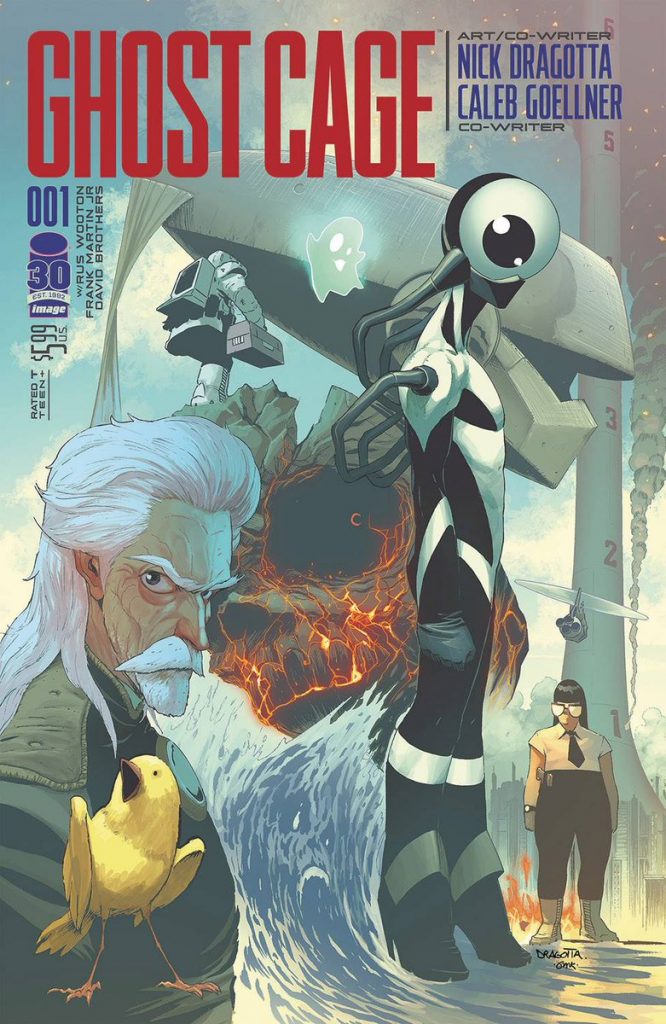
The Make the Climb Award: Ghost Cage
Why it stands out: I’ve always loved stories that asked you, or the stand-in hero version of you that you’re watching, to climb through an environment filled with great peril and mini-bosses before reaching the final boss. Whether it’s old school video games like the original Donkey Kong or movies like The Raid: Redemption or Dredd, there’s something primal about this concept, and one that allows for you to have a lot of fun as someone who engages with them, even if (or maybe because) the intensity ratchets up as you move further and further up.
That foundation exists within Nick Dragotta, Caleb Goellner, Rus Wooton, Frank Martin, Jr., and David Brothers’ Ghost Cage, a three-issue, super-sized miniseries that finds this concept smashed up against manga/anime superstars like Akira. It’s about a low-level employee of an all-encompassing energy company – named Doyle – unexpectedly being paired with a newborn war machine named Sam as they make the effort to climb up their towering, ultra-nuclear reactor-like headquarters that looms over a mega-city and stop a gaggle of nightmares the company created from destroying…well, everything. Naturally, it’s a journey of discovery, of visceral combat, and of antics galore.
But most of all, it’s gloriously, deliriously insane. It’s pure ideas executed in the most entertaining of ways, with Dragotta in particular stepping on his artistic gas pedal until its firmly entrenched into the floor. This doesn’t feel like a story that the team told as much as released, as there’s a nuclear energy to it that’s immersive and irresistible, making it feel unlike anything else you’ll read this year. That might be the thing I love the most about this comic. Despite the fact that I can point to several root points it may have been born from, it feels wholly unique, a creature unlike anything else on the stands.
If I had to rank 2022’s comics on inventiveness and pure, fizzy energy alone, Ghost Cage would be near the top, if not the top. It’s a blast of a comic, and one that hopefully will only see its audience grow over the years, as we all end up recognizing it for the bonkers beauty that it is.
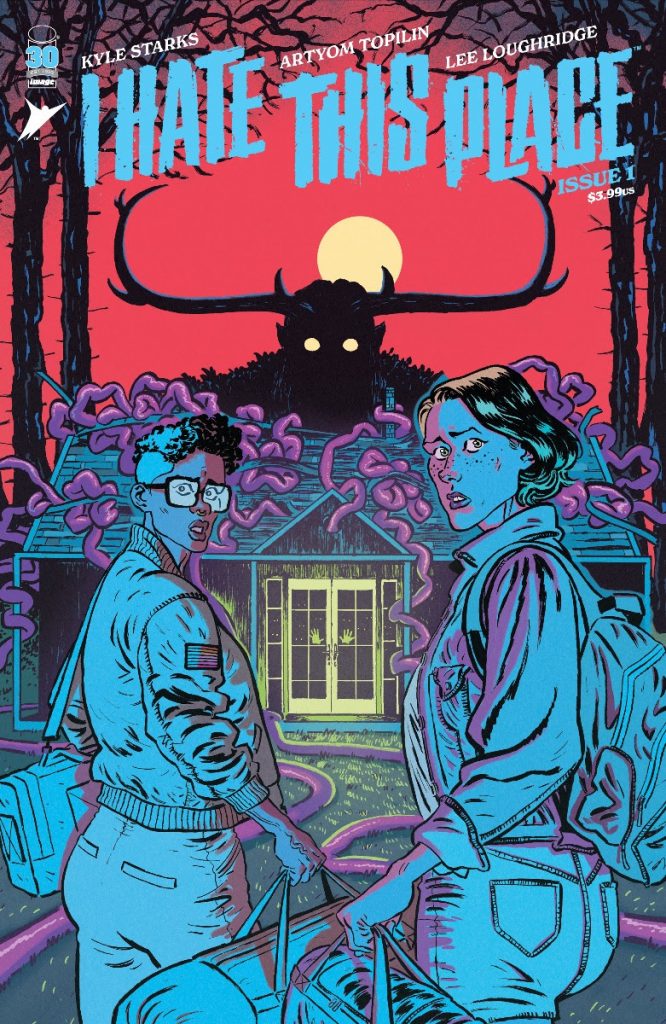
The Fusion Award: I Hate This Place
Why it stands out: I Hate This Place is, on the surface, a horror comic. Its writer, Kyle Starks, is mostly known for telling humorous tales. That’s led to a little dissonance from people who talk about this Skybound series, if only because the labeling gets murky when you’re trying to be a tidy describer of genres. If you had to put the series into a single bucket, it would definitely be horror, but its real secret – even more secret than what’s really behind the terror of Rutherford Ranch, or what exactly is going on with the Horned Man – is that it’s a little bit of everything, even if it’s primarily horror.
And it blends it all perfectly, resulting in a comic series that feels just like life, except a rather dark, unpredictable, far more clever version of our typical day-to-day existences. It’s a horror story, but really, you’re just following leads Trudy and Gabby on their journey at the Rutherford Ranch together, seeing how this environment and these experiences test and strengthen their relationship as a couple. It turns I Hate This Place into something even more special, a series you can’t help but be invested in and characters you can’t help but root for.
That fusion of tones and genres can be a difficult balance. A ghost hunting wisecracker like Dante Howitzer existing in the same story as a slasher like Frank Renda and a supernatural monster like the Horned Man could result in a tonal mess, especially with Trudy and Gabby’s relationship and past (together and separately) taking the lead. And yet, Starks and artist Artyom Topilin, whose Simon Gane/Martin Morazzo like style and potent character acting perfectly match the book, ably balance it throughout. That’s impressive work, as it is throughout, ensuring I Hate This Place’s place as one of the most enjoyable comics of the year, and maybe the strongest effort of Starks’ career to date.
I talked with Starks about this series on Off Panel earlier this year. You can listen to that here.
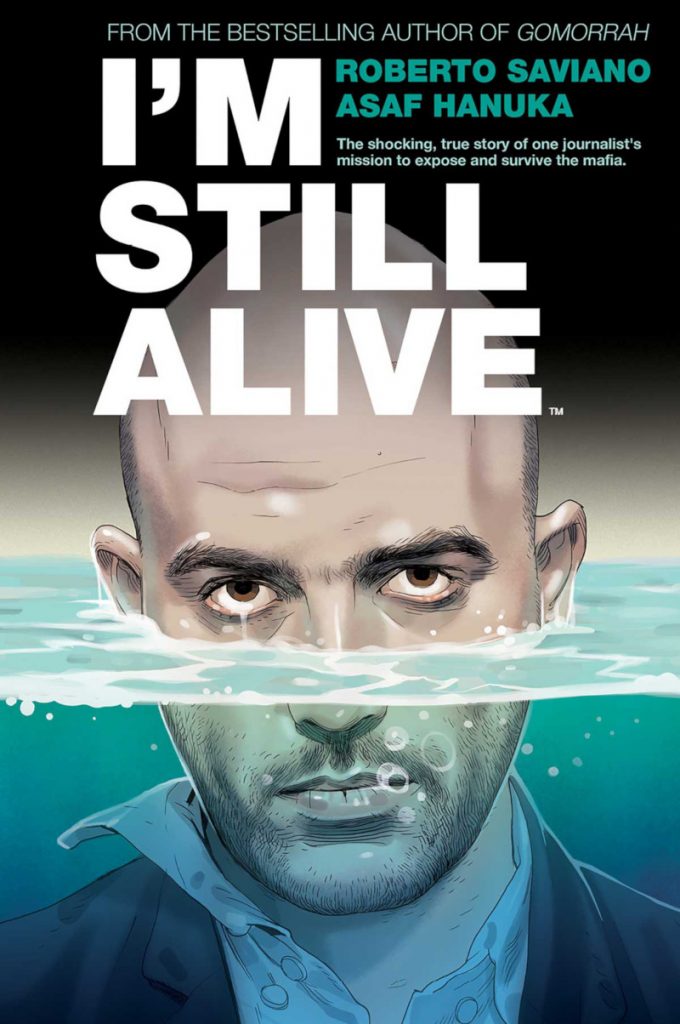
The Finding Answers Award: I’m Still Alive
Why it stands out: By most accounts, telling a story of a man relegated to single rooms for extended periods of time shouldn’t be a riveting, page turner of a comic. Single room dramas might agree with plays, but graphic novels ? Maybe not. Thankfully, this isn’t your typical biographical subject in Roberto Saviano, and it isn’t your typical cartoonist in Asaf Hanuka.
I’m Still Alive is…I’m going to call it a semi-autobiographical story, as it’s Saviano telling his tale of being under police protection for over a decade because of his work pulling back the curtain on the Italian mafia as an author and journalist, but it’s all through Hanuka’s filter. It’s Saviano’s story but visualized and conceptualized by one of the most imaginative storytellers in comics, and Hanuka turns this into a visual feast for comic fans, delivering what could have been a single room drama as one of the most imaginative, expansive, and arresting works of the year.
Saviano’s story alone would have been interesting. The man behind Gomorrah and ZeroZeroZero seemed like an apt fit for such a treatment, as his life experiences are unlike any I’ve ever come across. But with Hanuka finding answers about what this would look and feel like beyond the literal is an astonishing experience, and one you can’t help but be invested and engaged in throughout.
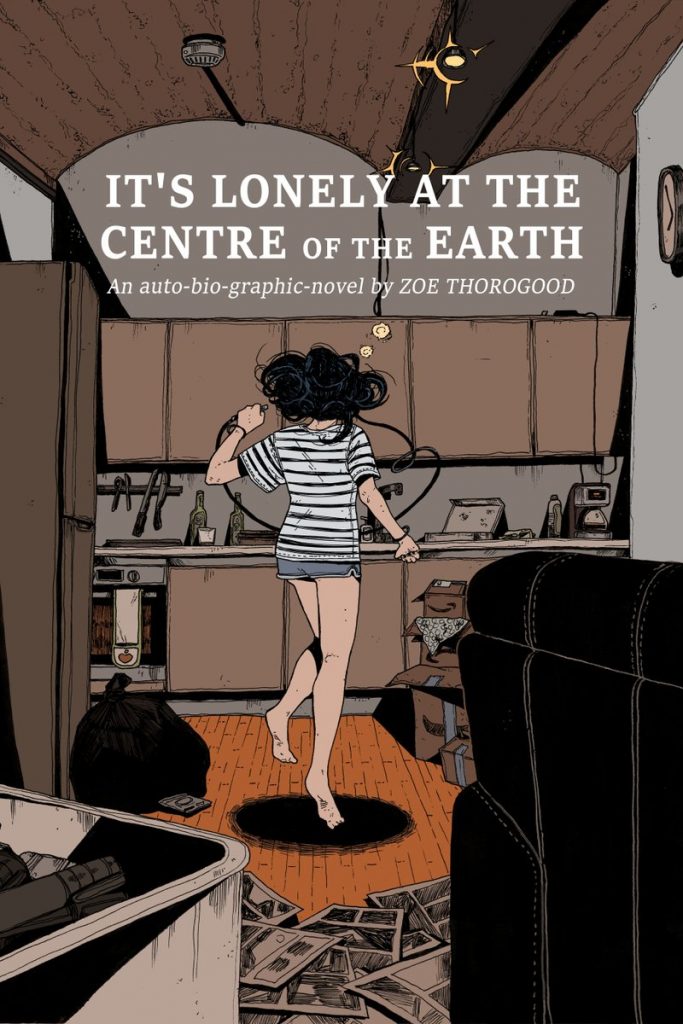
The Present of Comics Award: It’s Lonely at the Centre of the Earth
Why it stands out: There’s a scene early on in Zoe Thorogood’s latest graphic novel, It’s Lonely at the Centre of the Earth, where the cartoonist is told something important by writer Kieron Gillen, or at least an anthropomorphic parrot version of Kieron Gillen. He advises the young creator by saying, “Not to scare you, but as the future of comics, people will be looking to see what you do.” It’s a big moment for the cartoonist, and one that sends her spiraling a little bit because of the implications of that statement.
In that moment, though, Gillen wasn’t wrong. Thorogood had shown with her previous graphic novel The Impending Blindness of Billie Scott that she had an unusually innate understanding of comics, something that was already present within her work even with limited experience. Find the right focus, or the right project, and it could become something remarkable. And that’s just what Thorogood did when she turned her lens on herself in It’s Lonely at the Centre of the Earth, a graphic novel that revealed her as not “the future of comics” as bird Kieron Gillen suggested, but very much the present in all ways that matter.
That unique understanding of the medium explodes out of Thorogood throughout this release, as it explores a six month period of her life where she deals with everything from her own struggles with mental health, family, comic conventions, expectations from the people around her, budding love and broken hearts, and a whole lot more. This graphic novel is an intensely honest, fiercely creative release, something that reveals all while devastating comic book conventions before rebuilding them in the ashes of that decision. There’s more inventiveness in this comic than you might find in dozens if not hundreds of comics from this year combined, as Thorogood gives into instinct throughout, delivering spellbinding page after spellbinding page thanks to her clarity of vision and singular approach. The craft in this book is out of this world, an astonishing achievement of pure comic booking.
More than that, it’s a brutally honest take on herself as a human and a creative. Not everyone would be as willing to go as far as Thorogood does here, but it results in something you cannot help but be invested in and moved by, even if you wince as you read it on occasion. There’s a section within the book that finds the cartoonist at Thought Bubble dealing with hordes of people describing Billie Scott as “relatable,” with that character representing many of the things Thorogood feels as a person. I’ll zig to their zag here. It’s Lonely at the Centre of the Earth wasn’t relatable to me, but that didn’t limit its impact. It’s so uniquely insightful into a person quite unlike me that it made me feel as if I better understand and empathize with experiences like Thorogood’s after reading it. That takes a rare talent to deliver on what this book was attempting to achieve. But that’s Zoe Thorogood for you, the once future of comics, fully realized for the present.
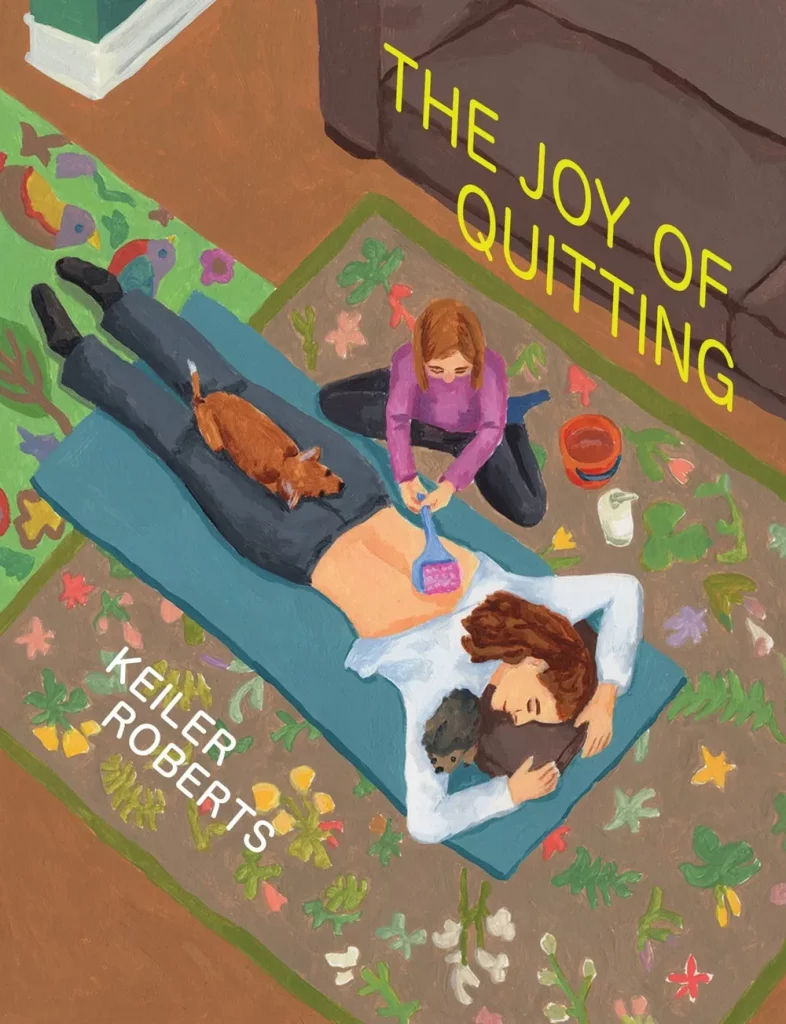
The Uncomfortable Laughter Award: The Joy of Quitting
Why it stands out: I don’t say these words lightly, so know I mean them when I say it: this might be the funniest comic I’ve ever read. The Joy of Quitting is a collection of Keiler Roberts’ autobiographical comics and strips about her day to day life, revealing every detail of her experience as a mother, wife, daughter, granddaughter, cartoonist, friend, and everything else, while somehow maximizing the honesty and emotions of each and every experience. Sometimes that results in moving, heartfelt beats about family and aging. Other times it’s thoughtful, introspective work about mental health and identity. The gamut is wide here, with Roberts ably delivering on all of them, creating a story that’s fully her own while feeling universal for whoever picks it up.
A lot of times, though, it’s some of the funniest things I’ve ever seen committed to a comic page. Much of that comes from Roberts and her relationship with her daughter Xia, someone who at the beginning of the story is quite young but precocious as all get out. The latter never changes, but the former naturally evolves, as do the stories involving the pair. Sometimes their stories aren’t as comedic, but when they are, they slay, with one in particular causing such a robust fusillade of laughter to come out of me that my wife was both concerned and amused by what was happening next to her as we both laid in bed (note: I primarily read in bed, and yes, this very experience would probably make an exemplary strip by Roberts).
What unites all this is Roberts gifts of observation as a cartoonist. That’s an unusual and rare gift. Kate Beaton’s one of the only other people in comics who is as capable in that regard, and Roberts uses that ability throughout The Joy of Quitting to provide insight into the human condition, pull back the curtain on domestic life, and, most of all, make us laugh to a perhaps unhealthy degree. It’s a wonder of a read, and a perfect gateway into the mind and comics of Roberts.
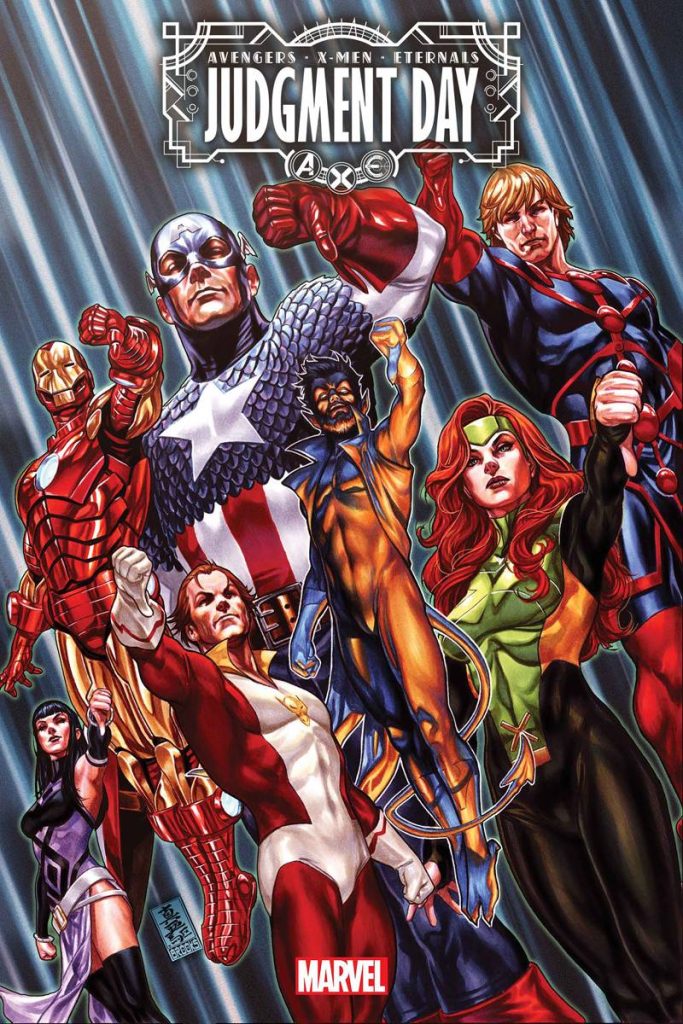
The Best of All Worlds Award: A.X.E.: Judgment Day
Why it stands out: The idea of an event comic is a malleable one in many ways. There are different flavors of them, like cosmic versus street-level or continuity-smashing versus nice and tidy. There are also scales to the idea, with “nothing will ever be the same” being the ceiling as was the case with monsters like Crisis on Infinite Earths or Secret Wars (2015) while others are more like elevated story arcs that deliver a Daredevil story (Devil’s Reign) or a Thor tale (War of the Realms) at a larger scale than they may have otherwise. I call the former of those capital “E” Events and the latter lower case “e” events. That isn’t a qualitative or diminishing statement. I think all four of those are good comics. It’s just there’s scales to these things.
The interesting part about this year’s Marvel event, A.X.E.: Judgment Day, is it’s sort of all those flavors at once? That might seem impossible, but bear with me. We’re talking about a story fundamentally driven by an Earth-wide war and a judgmental reborn Celestial that also uses six regular humans as focus characters as well as a story that simultaneously evolved from Eternals and Immortal X-Men while being fully on that “nothing will ever be the same” scale. It’s each of those ideas at once, a marriage of each key flavor to event comic arts. That combination has every right to be a mess.
And yet, it isn’t, as Kieron Gillen, Valerio Schiti, Marte Gracia, Clayton Cowles deliver something that gets the massive correct while ensuring the street level is equally so. It’s an Event that’s also an event, and it thrives because of it. That takes a special skillset amongst all creators. You need a rare balance, and an art team that can deliver on each flavor equally well. That happens here, and it’s a marvel to read, constantly surprising and exciting and reinvigorating the passion readers have for these sorts of stories.
The real superpower of Judgment Day as an event, though, is that it isn’t just the main story that works, but the main tie-ins and connected miniseries as well. A lot of times tie-ins feel like cheap ploys to bolster sales as much as anything, but Judgment Day has stories like Death to the Eternals, the Omega issue, and X-Men Red that might not be considered “essential” in a traditional sense, but certainly are in spirit. That’s atypical! All of this is, really. Maybe that’s why Judgment Day is the best event since 2015’s Secret Wars. It feels like the team looked at what’s come of late in the form and asked, “How can we be better?” like so many were wondering when The Progenitor from the story came to judge them. And as the characters did in the story, they didn’t just think about it, they did it. And the results were fantastic.
(For the comic, not the characters. Some of those actually had a pretty tough go of it.)
Gillen joined me and Joshua Williamson for a big chat about event comics earlier this year. You might dig that if you were a fan of Judgment Day.
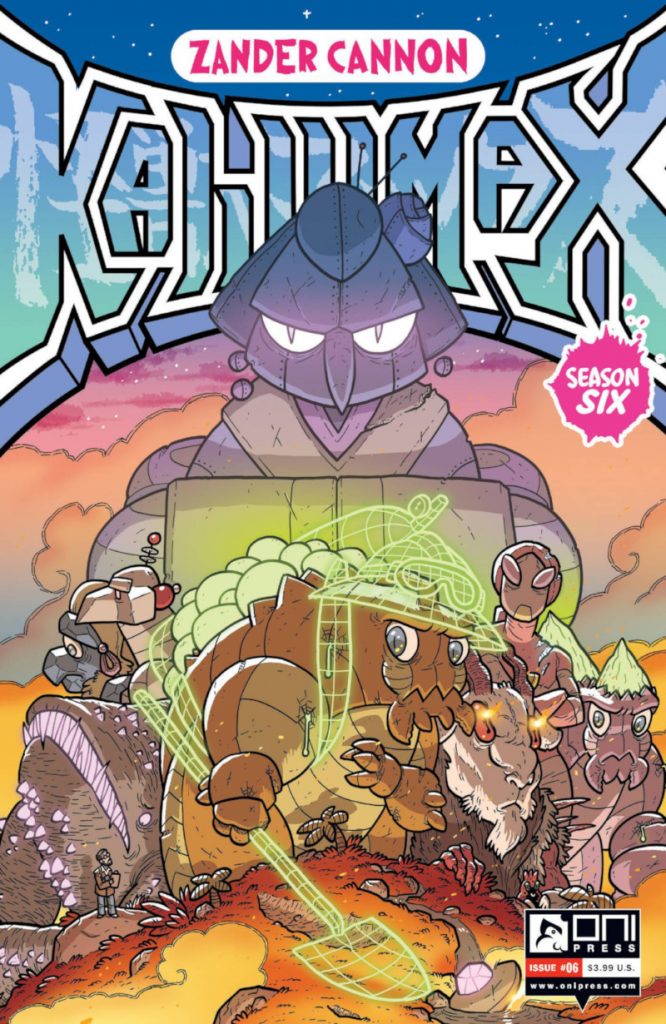
The Grand Finale Award: Kaijumax
Why it stands out: Generally speaking, one of my unsaid rules – that’s right, there are even more rules than the ones I lead these columns off with! – for The SKTCHD AWRDS is that each considered release must either be a complete story or have had three issues (or the equivalent of three three regular issue sized) releases worth of comics in the year. There must be a decent chunk of comic, because otherwise, things get overwhelming during the decision making process.
About that rule!
There’s no way I wasn’t going to tout Kaijumax’s grand finale, as Zander Cannon’s long-running Oni series concluded this year with a single issue that had everything you’d want from it. A beautiful endpoint to one of the longest-running character arcs in the series! An electric visual callback to the first season! Laughter! Tears! A shocking elevation of a once believed to be deceased fave! This one issue had a lot of narrative weight required of it, and it came with the additional weight of reader expectations. How do you pay off a six season, 36 issue series about a prison for kaijus that represented so many of the injustices and tropes of those two mashed up worlds?
The answer, apparently, was a single issue: Kaijumax Season 6 #6. That final issue proved that even the greatest of storytelling challenges are light work for the equally great Zander Cannon.
I may have written about this finale and series a few times this year. You may enjoy reading those.
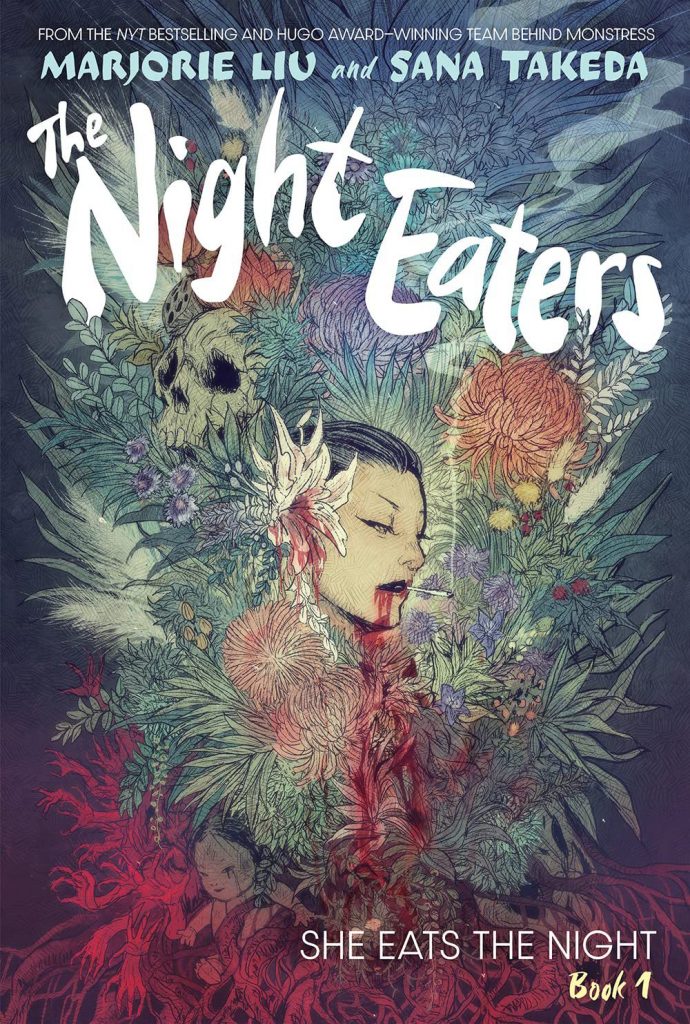
The Of the Moment Award: The Night Eaters: She Eats the Night
Why it stands out: One of the most interesting things about Marjorie Liu and Sana Takeda’s The Night Eaters: She Eats the Night isn’t the who of it, or the how, or even the why, but the when. Unlike a lot of stories – particularly those in comics – that have arrived during the pandemic years, The Night Eaters confronted it head on. Masks are worn. Impacts are felt. Concerns are voiced. This story takes place in a specific time and place, something that stands out, even if it isn’t a defining characteristic of what it’s about or even something that’s regularly focused on. It’s just an environmental aspect, something that sets the stage for the events that transpire within.
Some might read that and believe it will ultimately date this story. That’s not what I’m getting at here. Instead, my read is it grounds The Night Eaters, helping situate an often fantastical, supernatural, and horrific story very much in our reality. And that’s a huge part of why this story works. Everything Liu and Takeda do within is carefully measured to deliver the right mix of characteristics to achieve optimal results, from how flashbacks are used as almost chapter breaks/interludes to the frequency and freakiness of the scarier beats. This is a horror story, but at its heart, it’s a story of family and identity, and how sometimes the latter can be hidden to protect the former. Everything is in service of elevating those ideas, and executing them as well as possible.
The result is the finest collaboration between long-standing teammates Marjorie Liu and Sana Takeda, and the start of something special as we speed towards the second graphic novel of this series. I can’t wait to read it, even though I know it takes time to cook up something as special as this.
I talked with Liu about this series on Off Panel, and if you missed that conversation, you should really check it out because it’s an absolute blast of a chat.
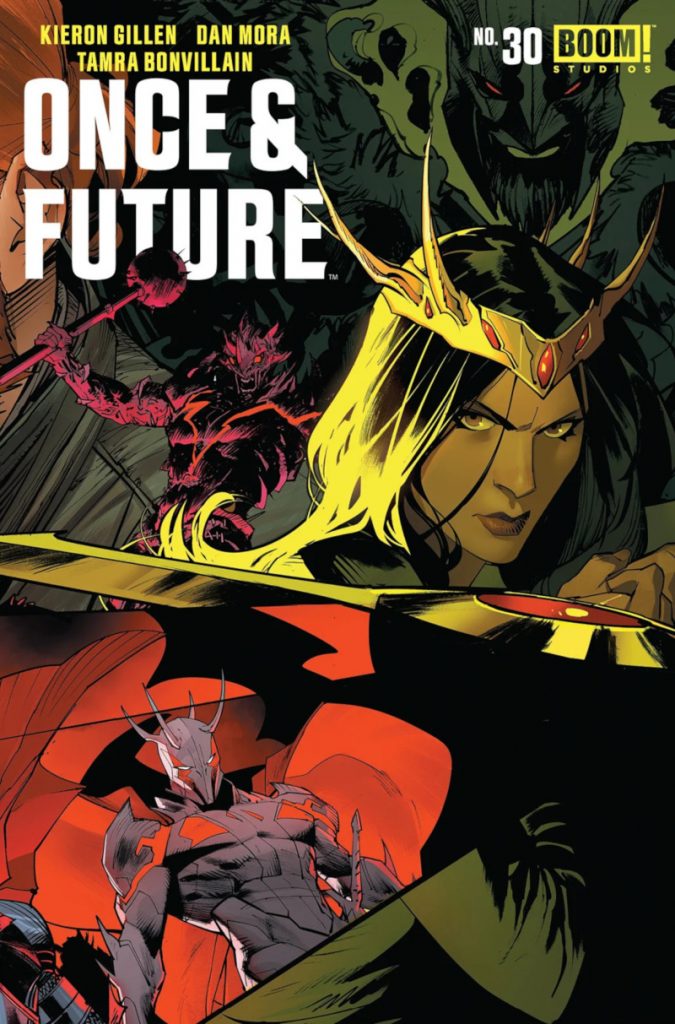
The Summer Blockbuster Award: Once & Future
Why it stands out: While I wouldn’t say that Once & Future was the best comic of the year, or even my favorite, I will say this: there aren’t many that were more fun. And that’s been the case for most of its now complete 30 issue run, as this idea rooted in classic literature and confronting modern nationalist ideology shares considerable DNA with the big explosions and bonkers energy of 1990s action blockbusters. I don’t say that to demean it, either: I love 1990s action blockbusters.
That’s a tough line to walk. Writer Kieron Gillen, artist Dan Mora, colorist Tamra Bonvillain, and letterer Ed Dukeshire could slip too far in one direction and it’d be either too smart or too dumb for its own good. But Once & Future carefully toes that line, turning all its knobs up to 11 and asking readers to hold on for dear life as we go on an adventure together. Consider this: at one point in the story, a trio of King Arthurs battle for possession of Excalibur and, thus, all of England. But Gillen dared to ask, “Why not four Arthurs?” as it all crescendos in glorious, character-based, shockingly logical magic. And that might not have even been in the top ten for the craziest beats in the entire storyline!
Even better, it all works, as readers just bask in the joy, insanity, and remarkable art by Mora and Bonvillain throughout. It being one of the best looking comics – not just action comics, but comics – on the market is really the straw that stirs its drink, elevating it from something entertaining conceptually to a series that’s deliriously fun throughout. Once & Future wrapped this year, and it ended on a high note, with a finale that blended big and small, crazy and quiet, and everything in-between. You couldn’t have asked for a better place to end the best summer blockbuster in recent comic book memory.
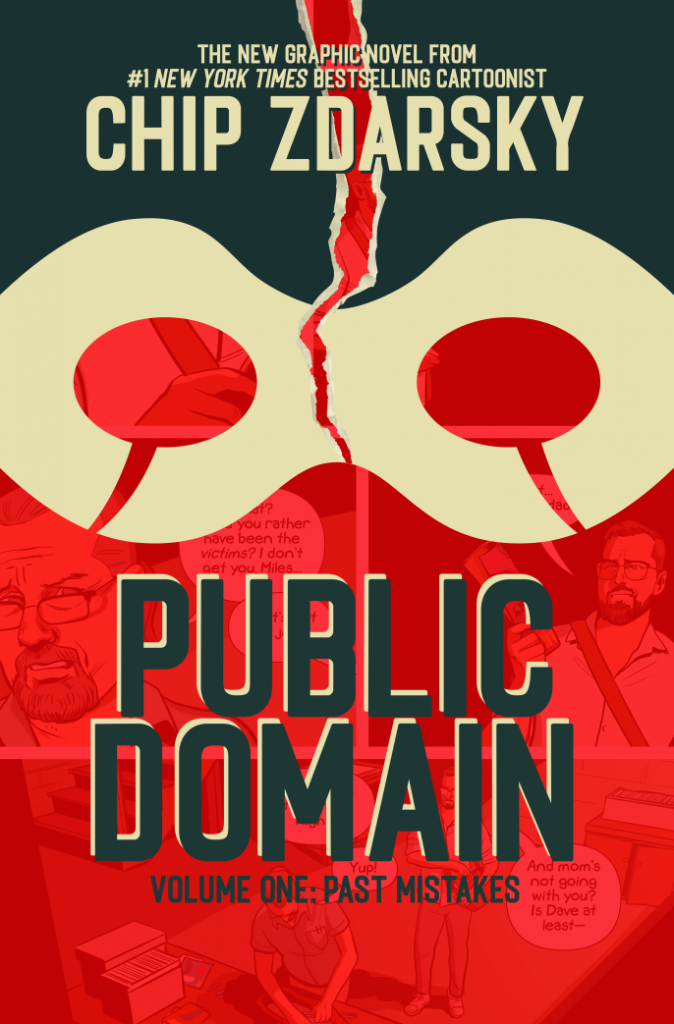
The Fate Award: Public Domain
Why it stands out: When a story is well plotted – I mean very, very well plotted – sometimes it can feel less like a narrative playing out that some grand puppeteer is behind and more like fate being executed. It’s like there was no other path for this journey to take, and the person (or persons) behind this tale just found the exact one necessary. Those are rare, and it’s difficult to point to why it’s the case when it happens. It just feels right, and that’s all you can say about it.
Public Domain is one of those comics.
There’s a moment in the fifth issue that hit me so hard in that specific way that I had to put the comic down and contemplate what I just read, like I was Antonio Banderas in that famous beat from Assassins. Chip Zdarsky – the writer, the artist, the colorist, the latter – put in the final piece of his first arc puzzle, and each character’s role illuminated into technicolor as the world finally became right. And it was good. But that’s all of Public Domain, a comic about creators making comics and the rights behind those, but also family and gentle buses and collaborators and role models and everything in-between.
Zdarsky is one of my favorite creators working today, someone who excels in no matter which role he takes on. Writer. Artist. Cover artist. Unusually dressed Lothario. Whatever his role is, he nails it, and has been for years. His comics have always been great, albeit varying degrees of such, but I always felt like there was another gear hidden somewhere within. “Which role might it come in?” I may have wondered. It turns out the answer wasn’t any one role, but all the roles, as Public Domain puts all the weight on him and he thrives with that responsibility. Public Domain is his best work yet, and it’s still early in its run. I genuinely cannot wait to see where it goes from here, but I know wherever it does, it’ll be right. Because it’s fate, and we’re just waiting for Chip to let us see what he already knows.
Chip joined me on Off Panel to talk all about this series. I may have complimented him a few times.
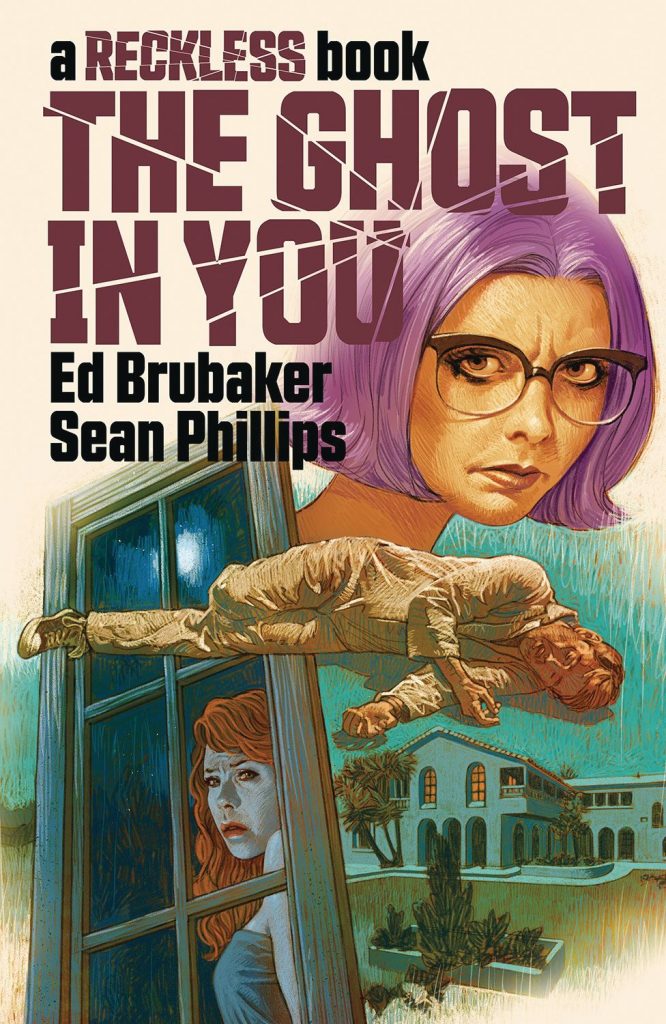
The Metronome Award: The Reckless series (or, more specifically, The Ghost in You and Follow Me Down)
Why it stands out: There are certain comics that are difficult to talk about on occasion, if only because the series itself or the creators working on it are so consistent it can be a struggle to find new ways to emphasize why it’s so good. The former’s less often these days, as long-running titles are few and far between. The latter, on the other hand, still happens with regularity. Chief among those are Ed Brubaker and Sean Phillips, a duo that’s been working together for over 20 years now and have proven themselves in every way a creative team can. They’re metronomes, a pair that’s so regular we can set a beat to them and never lose track.
But just because they’ve been working together for a long time doesn’t mean they can’t push themselves or learn new tricks, something their 2022 releases in the Reckless series – The Ghost in You and Follow Me Down – proved. One of the beautiful things about their collaboration together is they’ve been doing this for so long and they have so much freedom thanks to their deal with Image that they can take big swings just to see if something new works. Maybe they’re enjoying a specific character from Reckless, so all of a sudden they let the titular lead’s sidekick Anna be the sole lead for a book, like in The Ghost in You. Maybe they’re curious about mixing things up, timing wise, so Follow Me Down takes a big time jump at the end of its tale, resulting in a fresh energy to its final chapters.
This duo knows what makes the other tick, and because of that, they still seemingly push to surprise each other. That drive to keep things spicy has resulted in a constant elevation of their craft and collaboration, and an endless stream of comics that result in readers asking themselves, “Was that the best Brubaker and Phillips book yet?” That may well be the case for their latest releases, as that pair and colorist Jacob Phillips continue to find exciting new territory. They might be a metronome, but even metronomes can find new beats to take, changing things up whenever they see fit. That’s Brubaker and Phillips, and why they remain the best team in the game 20 plus years later.
I talked with Brubaker about this series on Off Panel recently, so if you enjoy Reckless, you’ll probably dig that chat.
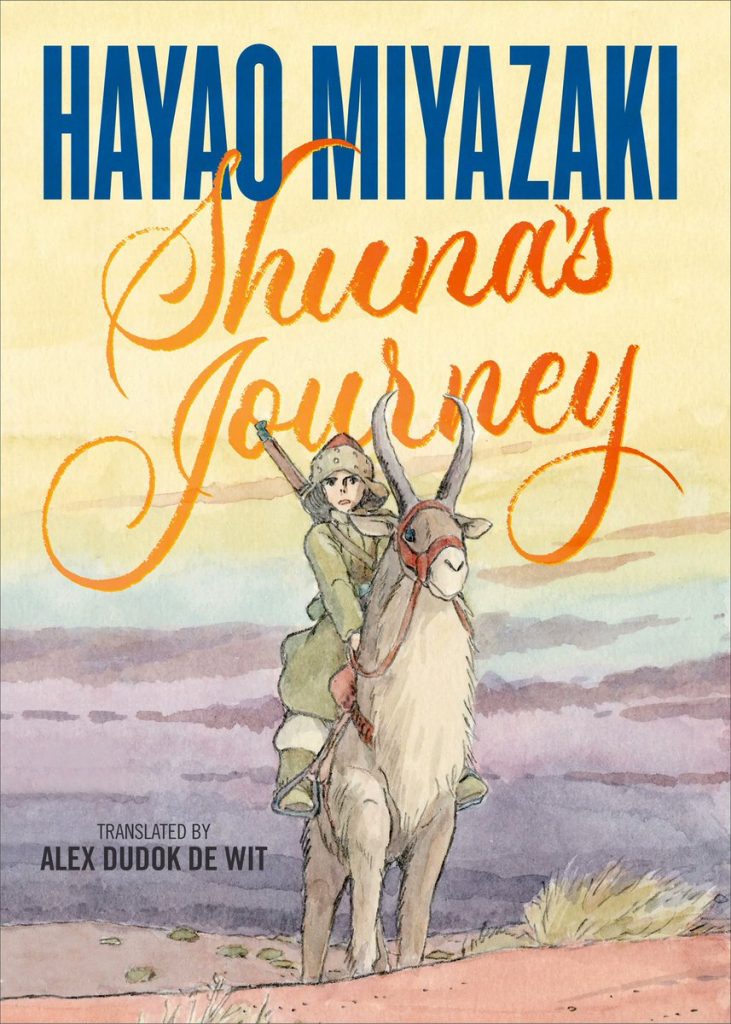
The Storybook Award: Shuna’s Journey
Why it stands out: I’m going to go out on the limb with this take: Hayao Miyazaki is pretty good at this whole comics thing. While it’s technically an emonogatari (in which the text and images are less fully integrated than in traditional comics) rather than manga, whatever Miyazaki’s 2022 release Shuna’s Journey is, it’s wonderful. This graphic novel from 1983, now translated into English for the first time, was well worth the wait.
Fans of Miyazaki will be impressed on multiple levels. The obvious one is the craft. This comic looks incredible, with potential visuals that compel you forward throughout the tale. But another big one is how this story acts as a proto-Miyazaki tale, with the roots of so much of what comes later in his work (Ashitaka’s Yakul from Princess Mononoke, the clear environmentalist message, the leads that take on a bold journey and often suffer along the way for their trouble) being present here. This is clearly a foundational piece for the beloved, legendary animator.
But, again, it isn’t important simply because of what it begets. It’s an excellent story in its own right, with Shuna being a winning lead, a hero with unflinching drive and a real sense of honor in a world clearly lacking in it, and this world being a wondrous one that you can’t help but be immersed in. Its nature as an emonogatari actually helps it, in my opinion, as it gives the graphic novel a storybook feel that elevates Shuna’s titular journey and the meaning behind it all in the process. Regardless of the type of comic it is, it’s one that’s well worth a read, as it’s a highlight reel for a master finding his footing, and delivering a sensational graphic novel in the process.
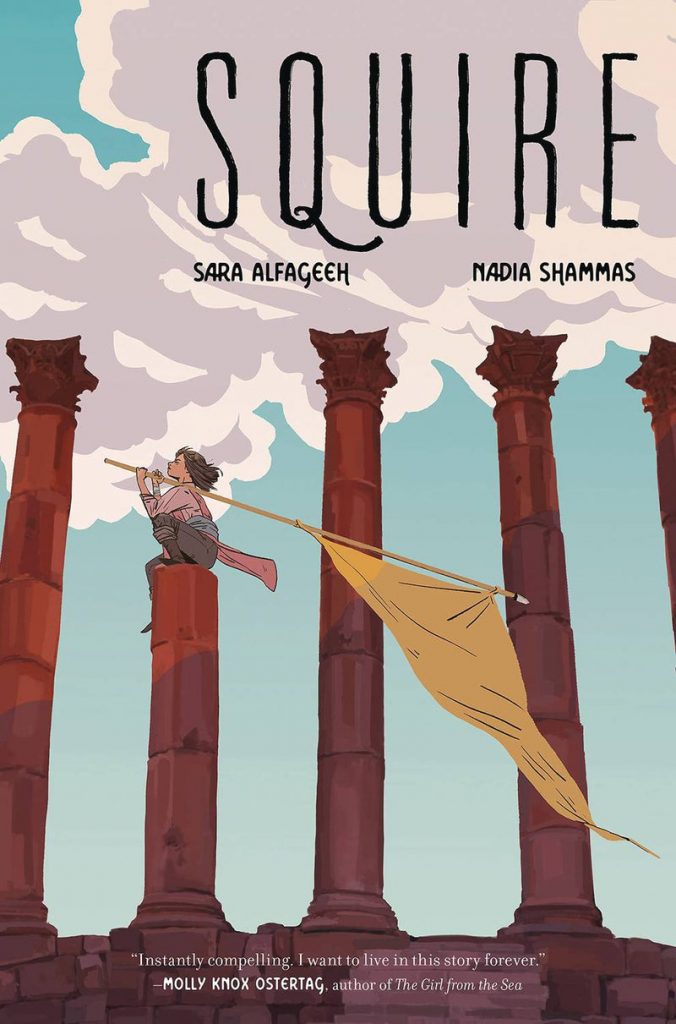
The Clarity of Vision Award: Squire
Why it stands out: Comics can be great and still feel as if they’re figuring themselves out on the run, as if the story reveals itself to the creators the more they work on it. There’s no harm in that. In fact, sometimes that can result in an exciting, constantly evolving work. But when a team delivers a story that knows what it is from the jump, it can be special, displaying a clarity of vision that’s rare in the comic medium — or really any medium, for that matter.
That was certainly the case with Squire, Sara Alfageeh and Nadia Shammas’ Quill Tree graphic novel. It follows a young woman named Aiza, someone born to a people destined to always come last within the empire they’re a part of, and her journey to find something more as a squire-in-training before hopefully one day becoming a knight herself. Naturally, there are roadblocks and complications throughout this story, as Aiza faces challenges from her peers and leadership on this journey. But no shortcuts are taken in the process of developing and delivering this story, as Alfageeh and Shammas’ vision for this book — whether you’re talking the alternate history Jordan it takes place in or history shared by characters within this world — feels fully realized from the start.
This pair know what it wants for this story and executes it perfectly, whether you’re talking Alfageeh’s stunning character work or Shammas’ thoughtful approach to revealing who these characters are, both on the good side and the…well, occasionally less likable side. But even in that case, no one is painted as an unimpeachable hero or villain here. That makes this a far more interesting story than it might have been otherwise. That’s where the greatness of Alfageeh and Shammas lies. They know what this story needs to live its best life, and they deliver that in full within Squire’s pages.
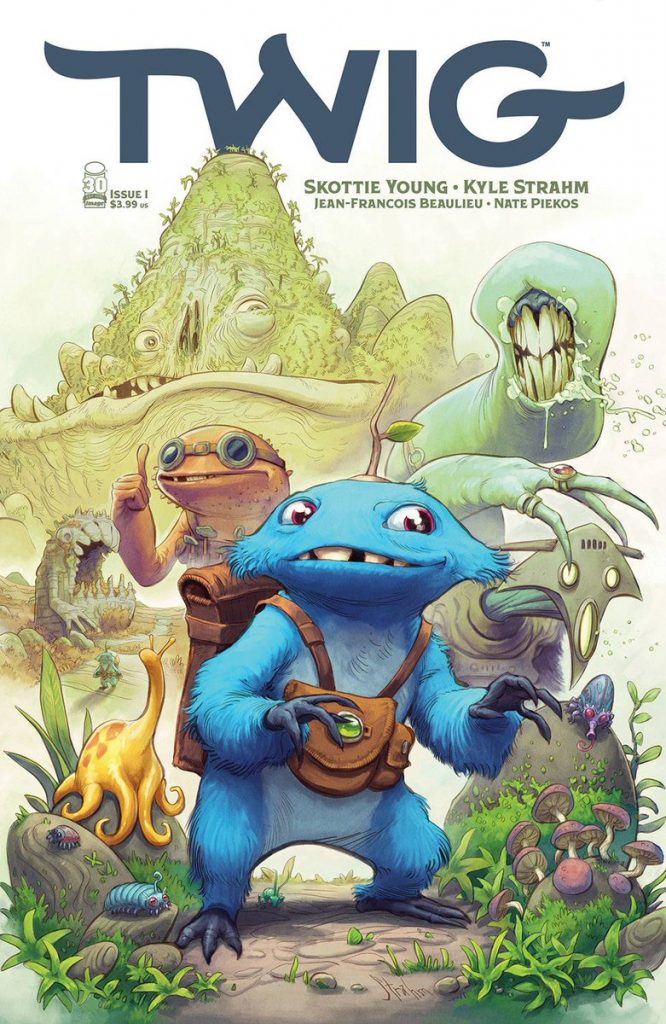
The Incredible Journey Award: Twig
Why it stands out: Twig is a book that’s easy to love, if only because its concept is so primal. It’s a quest at its core, one starring an exemplary lead, charming sidekicks, and a wonderful world realized in full by artist Kyle Strahm and colorist Jean-Francois Beaulieu. But even deeper than that, it’s about responsibility, and living up to the shadow of your family and past. There’s so much to it that is perfect in its simplicity – Splat is a gem with his amorphous shape and engaging personality, Twig’s quest is pure in what it asks of him (even if it has some complications along the way), and the montages on their journey charmed me for days – but a lot of its magic comes in its stealthy complexity.
My favorite bit of that is the revelation at the end, in which we learn about the nature of Twig’s quest and what it sets up. It’s such a smart, smart storytelling beat, something writer Skottie Young should be proud conceptualizing and the whole team should be proud of delivering so flawlessly. But there are little bits of that throughout, ones that add significant depth to the journey, even if Twig is still a light enough read that I happily bought the trade paperback for my niece and nephew this year as a Christmas present. That’s a tough balance to deliver on, something the 1980s fantasy adventures that inspired this story to some degree were remarkable at doing. Twig does that, and does that well, resulting in a read that surprises and delights throughout, while looking as good as any comic did this year in the process.
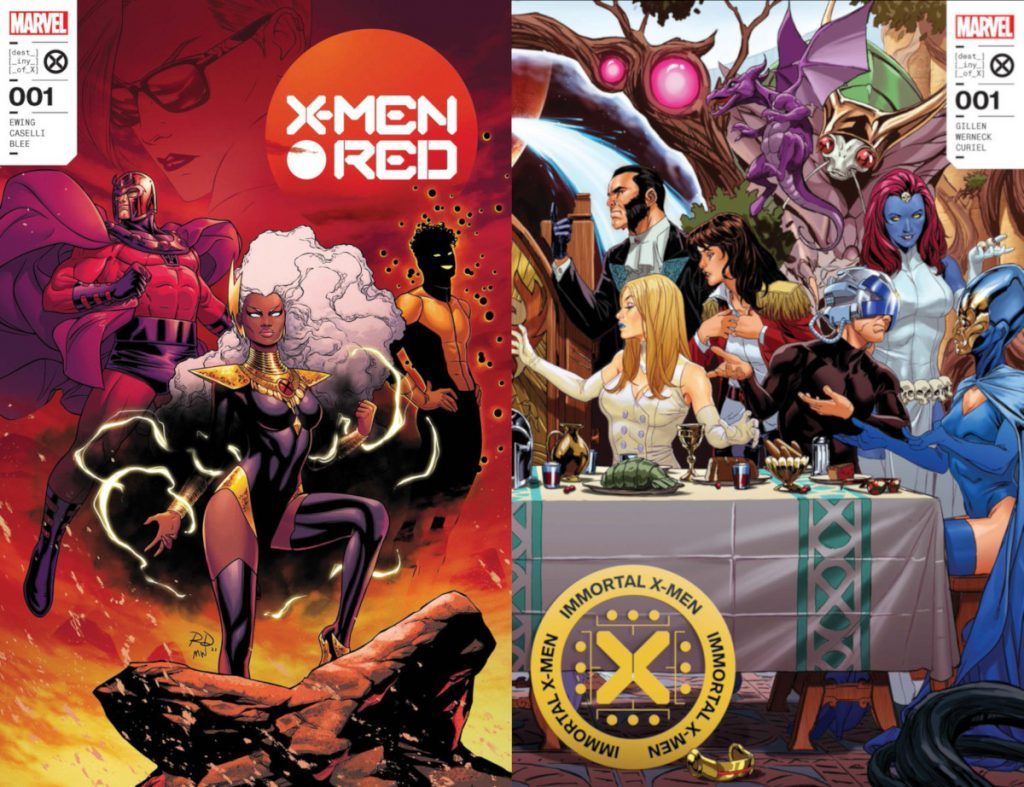
The Co-X-Men Comics of the Year Award: Immortal X-Men and X-Men Red
Why it stands out: On Off Panel’s end of the year countdown episode, I was forced to rank these two titles, resulting in Al Ewing, Stefano Caselli, and friends on X-Men Red finishing at #8 and Kieron Gillen, Lucas Werneck, and others on Immortal X-Men #9 in my top 20 comics of 2022. If pressed, that’s where I’d end up, but the reality is this: I look at these two titles as inseparable, twin planets that define the X-Men universe at this point in time. That’s why they’re being discussed together. It’s the only choice available to me, making them the co-X-Men Comics of the Year.
While they have their own unique flavors — Immortal X-Men’s backstabbing and political machinations surpass even X-Men Red’s, while the latter outdistances the former in creating showstopping, iconic moments — they’re two sides of the same coin, with Immortal exploring the inner workings of the ruling class on Krakoa while the latter focuses on building the identity and structure of Arakko’s leadership right after its birth. They’re the two lands that are one, but each creative team brings their own twist to that concept. As I tell Immortal X-Men writer Kieron Gillen on Off Panel next week, my read is that Immortal is about the Quiet Council figuring out a way to survive — both each other and a world that’s gunning for their people — while X-Men Red is a few big thinkers and big doers trying to thrive in the face of great headwinds and sabotage from inside by key decision makers. It’s a small difference, but a crucial one, and it creates a deliciously complex and complementary relationship between the two.
They’re similar, but different, but the most important thing is this: each is an incredible series, comics that are a blast to read and a delight to dig in to. They’re the dual pillars of the current X-Men line for me, forming the foundation of the biggest story beats and the smallest, most petty grievances. That’s just what I want out of the X-Men line in 2022, and going forward as well.

